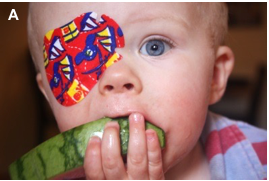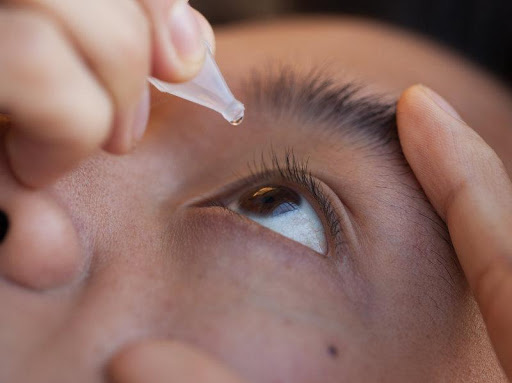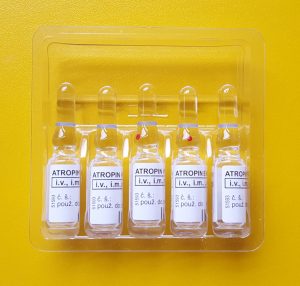Treating Strabismus with an Eye Patch
Ocular patches are frequently used as treatment of strabismus especially in younger patients as an alternative or adjuvant to surgical correction. It is a noninvasive way of correcting alignment by increasing strength in weak ocular muscles by repetition and training. But how exactly does it work?
How Eye Patching Works

The theory behind patching is placing an occlusive patch over the ‘’normal’’ eye, that is, the eye that is correctly aligned. This then blocks vision from the occluded eye and forces the brain to receive input from the misaligned eye, which may often be ignored. With the eye out of alignment and out of focus the brain then sends signals to the ocular muscles causing them to contract or release in order to align the eye and send visual signals to the brain. Over time, the muscle that was weak causing the strabismus gains strength and is less likely to cause deviation thus restoring binocular vision and ocular alignment.

The theory of patching is outstanding and offers a strong alternative to more invasive procedures. However, more often than not parents report difficulty in compliance amongst children. “A growing body of evidence suggests that patching is associated with peer victimization.” Many studies have shown psychological and emotional opposition to the use of patching in pediatric patients due to bullying potential and social isolation from peers. Some parents try to find enticing ways to increase compliance with patching by creating or purchasing decorative patches or occlusive bandages with popular characters or colorful options, however it is not studied if this truly increases behavioral response to the occlusive therapy.
Chemical Eye Patching

Another form of patching that does not require a physical patch is a chemical patch. In this approach, atropine drops are administered again into the dominant eye causing visual disturbances by dialing the pupil and blurring vision. Like physical occlusive patches, atropine drops force the dominant eye’s input to be rejected and requires the brain rely on impulses sent from the non-dominant, misaligned eye. Again, this forces the non-dominant eye to align in order to send impulses to the visual center of the brain. However, atropine is a medication that comes with its own slew of side effects and it is less often used due to poor compliance itself. Imagine trying to intentionally partially blind a child multiple times a day, everyday, for potentially years.
References
- Koklanis, K., & Georgievski, Z. (2007). Patching treatment and bullying. The British journal of ophthalmology, 91(1), 123.
- https://nei.nih.gov/news/pressreleases/031302



